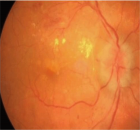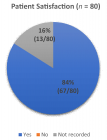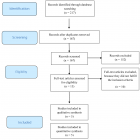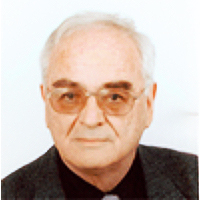Table of Contents
Pseudomonas stutzeri meningitis in a patient with post-laminectomy CSF leak and infected pseudomeningocele: a case report
Published on: 11th November, 2022
Spine degenerative surgeries are very common but carry multiple complications such as dural tears, CSF leak, pseudomeningocele and very rarely meningitis. Here we report such a case and discuss the possible causes, management and review of the literature.It’s a case of a 68-year-old man who underwent a posterior laminectomy that was complicated by a CSF leak and pseudomeningocele. Twelve days later the patient developed a severe bifrontal headache and then altered sensorium. CSF studies revealed severe meningitis with Pseudomonas stutzeri. It was multi-sensitive and after initiation of gram-negative coverage the patient markedly improved. However, the meningitis was further complicated by cerebral venous sinus thrombosis and he was also started on anticoagulation.Conclusion: Pseudomonas stutzeri has rarely been reported as a cause of meningitis and has never been reported post-laminectomy. Meningitis symptoms and signs could be obscured by the use of steroids in the postoperative period. Hence, it is of paramount importance to look for any subtle signs of infection in the postoperative period and question the use of high-dose steroids that could easily mask them.
Nutritional interventions for the prevention and treatment of neurological disorders such as anxiety, bipolar disorder, depression, epilepsy, multiple sclerosis, and schizophrenia
Published on: 11th November, 2022
Neurological disorders are a significant cause of mortality and disability across the world. The current aging population and population expansion have seen an increase in the prevalence of neurological and psychiatric disorders such as anxiety, bipolar disorder, depression, epilepsy, multiple sclerosis and schizophrenia. These pose a significant societal burden, especially in low - and middle-income countries. Many neurological disorders have complex mechanisms and lack definitive cures; thus, improving our understanding of them is essential. The pathophysiology of neurological disorders often includes inflammation, mitochondrial dysfunction and oxidative stress. Oxidative stress processes, especially the generation of reactive oxygen species, are key mechanisms in the development of neurological disorders. Oxidative stress refers to an imbalance between the production of reactive oxygen species and antioxidants that can counteract them. Through their impacts on the pathophysiology of neurological disorders, nutrients with anti-inflammatory, neuroprotective and antioxidative properties have been suggested to prevent or mitigate these disorders. Certain vitamins, minerals, polyphenols and flavonoids may have therapeutic effects as adjuvant treatments for neurological disorders. Diet quality is also a risk factor for some neurological and psychiatric disorders and addressing nutritional deficiencies may alleviate symptoms. Therefore, optimizing nutritional intake may represent a potential treatment or prevention strategy. This review summarizes a selection of promising nutrients for the prevention and amelioration of neurological disorders to provide a summary for scientists, clinicians and patients, which may improve understanding of the potential benefits of nutrients in the treatment of neurological disorders.
State of the science in diabetic foot: subjective screening vs. objective diabetic neuropathy examination in primary care
Published on: 14th October, 2022
Among the conditioning factors of Diabetic Foot (DF), neuropathy is considered the main factor, arteriopathy the aggravating factor, and foot deformities the triggering factor. The preventive interventions for DF and its complications are distributed by levels of care. At the higher level, hospital care focuses on reducing DF amputations. At the lower level, Primary Care (PC) and Podiatry, focused on preventing DF. PC is considered the ideal place to identify the conditioning factors of DF. In this area, prevention follows the recommendations of the International Working Group on Diabetic Foot (IWGDF) by screening neuropathy focused on the sensitive or insensitive foot. The American Diabetes Association (ADA) a recommends person-centered assessment of neuropathy by clinical examination of symptoms and signs testing sensory, motor, and autonomic neuropathy. This controversy lead us to investigate which methodology (screening or clinical examination) could be more accurate in identifying the conditioning factors of DF in a group of people recruited in the TERMOPIEDI study. Neuropathy was assessed following the definition of diabetic neuropathy, the Young MJ diagnostic criteria, and the Toronto Council diagnostic category. These results allowed us to know the applicability of this procedure in PC within nursing competencies, detecting a greater number of patients with neuropathy compared to the screening method. People with neuropathy presented higher plantar temperature, concluding that neuropathy interferes with foot thermoregulation.
Idiopathic progressive polyneuropathy presented with frequently acute pulmonary oedema: a case report
Published on: 29th September, 2022
Neuropathy is when nerve damage interferes with the functioning of the peripheral nervous system (PNS). When the cause can’t be determined, it’s called idiopathic neuropathy(Idiopathic neuropathy, now designated as chronic idiopathic axonal polyneuropathy (CIAP).There are three kinds of nerves within the PNS. Sensory nerves relay messages from the sense organs to the brain. This allows sensations of temperature and touch. Motor nerves transmit signals from the brain to the muscles. This helps the brain control the muscles. Autonomic nerves control body functions like heart rate, breathing, and digestion.Damage to nerve cells can affect how the PNS communicates with the rest of the body. Symptoms can include numbness, pain, and balance issues.It’s called acute neuropathy when symptoms develop suddenly. Alternately, it’s called chronic neuropathy when symptoms start slowly and increase over time. Diagnosis involves physical examination and review of medical history. Diagnostic testing may include blood tests, nerve testing, and imaging tests.There is no cure for idiopathic neuropathy. Treatments including medication, physical therapy, and lifestyle modifications can help you function and feel better.We report a case of idiopathic polyneuropathy presented with frequent acute pulmonary edema for a year.
Sural nerve conduction study: Reference values in the Algerian population
Published on: 20th September, 2022
Objectives: The sural nerve is the most tested sensory nerve in the lower extremities in the electrodiagnostic assessment of peripheral neuropathies. This study presents the reference values of the sural nerve conduction study (NCS) from a significant sample of the Algerian population. Methods: This is a prospective study of right sural NCS in healthy subjects based on the later recommendations of AANEM-NDTF. The nature of the distribution of each electrophysiological parameter was therefore determined. The lower and upper limits were calculated by using the 5th and 95th percentiles respectively and a logarithmic transformation was performed for Sensory Nerve Action Potential (SNAP) amplitude distribution. Results: 115 subjects aged between 20 and 60 years were selected, including 58 women and 57 men. Unlike Sensory Nerve Conduction Velocity (SNCV), the distribution of SNAP amplitude is not Gaussian. The lower limit of SNAP amplitude was 7.70 µV when using the 5th percentile and 6.80 µV by using the Standard Deviation (SD) method after log transformation. Similarly, the lower limit of SNCV was 43 m/s. The SNAP amplitude was greater in women and decreased with age, height and BMI. Conclusion: The values found in this study are comparable to those published in the literature. It may be more appropriate to determine the reference values using percentiles as recently recommended by several authors.
Knowledge, attitude and behaviour of undergraduate medical students towards mentally Ill patients-Suez Canal University, Egypt
Published on: 10th September, 2022
Background: Worldwide, studies show negative attitudes among medical students toward psychiatry and mental illness. The knowledge of the attitude and awareness of the undergraduate medical students toward mental health and psychiatric disorders are most important as they are going to be involved in the care of these patients either directly or indirectly during the years of their careers.Aim: To explore, the knowledge, attitude, and behavior of undergraduate medical students towards mentally ill Patients before their planned psychiatry rotation in the fourth year of undergraduate medical study, faculty of medicine, Suez Canal University, Ismailia, Egypt.Objectives: To assess mental health-related knowledge, attitudes and intended behavior of undergraduate medical students towards mentally ill patients.Subjects and methods: A descriptive, cross-sectional study, conducted on 120 fourth-year undergraduate medical students affiliated with the faculty of medicine-Suez Canal University. A comprehensive sample was used to include all of the students in the fourth year of undergraduate medical study, and the study group participants completed a semi-structured questionnaire including four parts to assess their knowledge, attitudes, and behavioral responses towards individuals with mental illnesses. The data of the study was collected in September-October 2019.Results: Based on the participants’ scores, the cut-off points estimated to dichotomize the responses as poor or good, for mental health-related knowledge, belief towards mental illness and intended behavior were, 17, 55 and 8.5 respectively. This study showed that the study participants had marginally poor mental health-related knowledge with a median score of 17, poor beliefs about mental illness with a median score of 49.5 and poor intended behavior towards the mentally ill with a median score of 7. Conclusion: In this study, undergraduate medical students showed marginally poor mental health-related knowledge, poor stigmatizing beliefs, and behavior towards mentally ill patients. More controlled studies are needed to eliminate the inherent response biases in survey studies and to measure the outcomes of anti-stigma educational and curricular interventions.
Circadian temperature rhythms of the healthy and damaged brain
Published on: 25th August, 2022
The study of circadian rhythms of changes in the performance of body systems allows us to evaluate the regulatory systems and is an important tool in diagnosing the severity of the course and prognosis of the outcomes of various diseases.
Role of perioperative plasma D-dimer in intracerebral hemorrhage after brain tumor surgery: A prospective study
Published on: 2nd August, 2022
Background: Intracerebral hemorrhage (ICH) is one of the most feared complications after brain tumor surgery. Despite several factors being considered to influence bleeding, an increasing number of clinical studies emphasize that hemostatic disorders, developed during surgical aggression and tumor status, could explain unexpected ICH. The objective of this prospective study was to evaluate the influence of perioperative D-dimer levels on ICH after brain tumor surgery. Methods: This prospective, observational, 18-month study, at a single third-level hospital, included all consecutive adults operated on brain tumors and postoperative stay in an intensive care unit. Three blood samples evaluated D-dimer levels (A-baseline, B-postoperative and C-24 hours after surgery). The normal range considered was 0-500ng/ml. ICH, as a primary outcome, was defined as bleeding that generates radiological signs of intracranial hypertension either by volume or by mass effect on the routine CT scan 24 hours after surgery. Other tumor features and hemostasis variables were analyzed. Chi-squared and Fisher’s exact test were used in the inferential analysis for qualitative variables and Wilcoxon and T-Test for quantitative ones. P-value < 0.05 was considered significant for a confidence interval of 95%. Results: A total of 109 patients operated on brain tumor surgery were finally included, 69 male (63,30%) and 40 female (36,70%), with a mean age of 54,60 ± 14,75 years. ICH was confirmed in 39 patients (35,78%). Their average of DDimer was A-1.526,70 ng/dl, B-1.061,88 ng/dl, and C-1.330,91 ng/dl (A p0.039, B p0,223 C p0.042, W-Wilcoxon test). The male group was also associated with ICH (p0,030 X2 test). Of those 39 patients with ICH, 30 in sample A (76,9%), 20 in sample B (51,28%) and 35 in sample C (89,74%) had a D-dimer > 500 ng/dl (p0,092, p1, p0,761 X2 test) and the relative risk of developing a postoperative hematoma in this patients was increased 0,36-fold presurgery, 0,25-fold postsurgery and 0,40-fold 24hours after surgery. D-dimer variation, had no statistical significance (p0,118, p0,195, p0,756 T-test). Platelets and prothrombin activity were associated with D-dimer levels only in sample A (p 0,02 and p 0,20, W Wilson). Conclusion: High levels of perioperative D-dimer could be considered a risk marker of ICH after brain tumor surgery. However, more studies would be worthwhile to confirm this association and develop primary prevention strategies for stroke.
A case of hemiplegia with a cerebrovascular accident in which motor imagery of finger extension on the affected side with finger extension on the unaffected side was effective - A study using F-waves
Published on: 1st July, 2022
We investigated the effect of exercise therapy by simultaneously using motor imagery of thumb or all finger extension on the affected side and thumb or all finger extension exercise on the unaffected side by using the F-wave, which is used to measure the excitability of anterior horn cells to devise an appropriate exercise therapy using motor imagery for patients with increased muscle tone of the thumb muscles on the affected side. Tasks 1, 2, 3, and 4 involved motor imagery of thumb extension on the affected side, motor imagery of finger extension on the affected side, motor imagery of thumb extension on the affected side based on thumb extension on the unaffected side, and finger extension on the affected side based on finger extension on the unaffected side, respectively; conducted in three trials, with one week or more between each trial. Each task was performed for one minute, with a five-minute interval between tasks. The F-waves from the thenar muscles were recorded with median nerve stimulation on the affected side before and during the tasks. The relative values of the F-wave data of the task and the F-wave data before (resting state) and during the tasks were calculated. In results, the relative data of the F/M amplitude ratio in task 4 was lower than that in the other tasks in three trials. In conclusion, motor imagery of finger extension on the affected side with finger extension movement on the unaffected side was effective for improving the muscle tone of the thenar muscles on the affected side.

If you are already a member of our network and need to keep track of any developments regarding a question you have already submitted, click "take me to my Query."



















































































































































